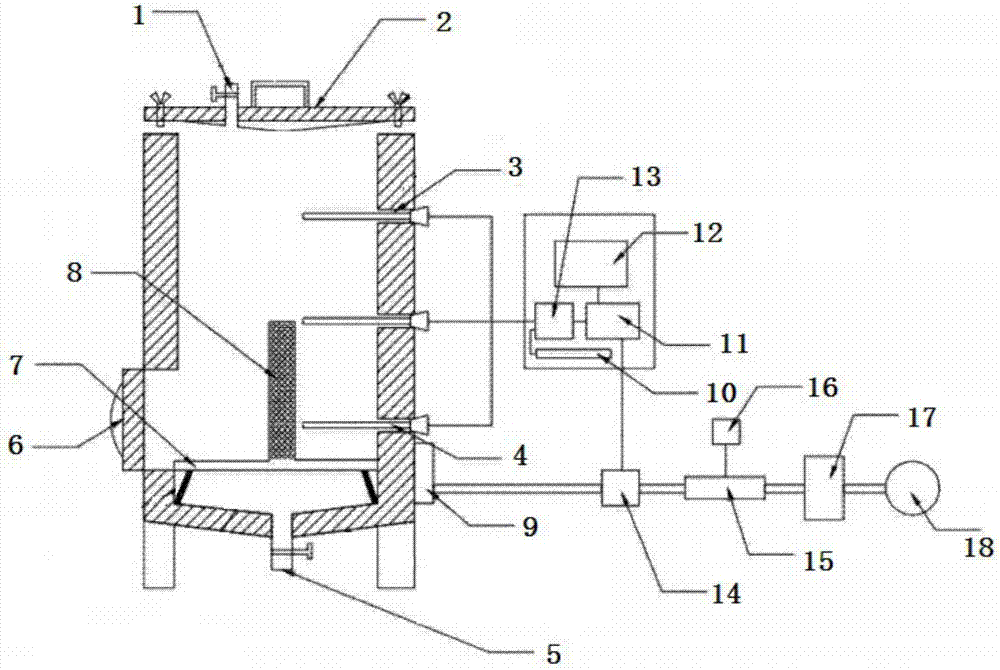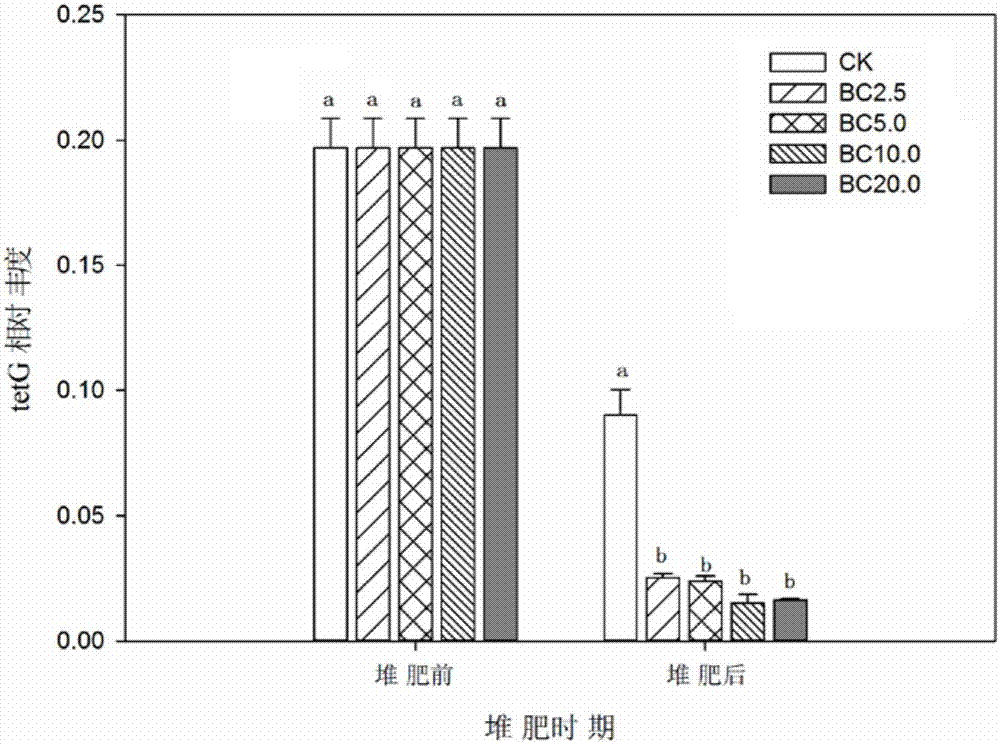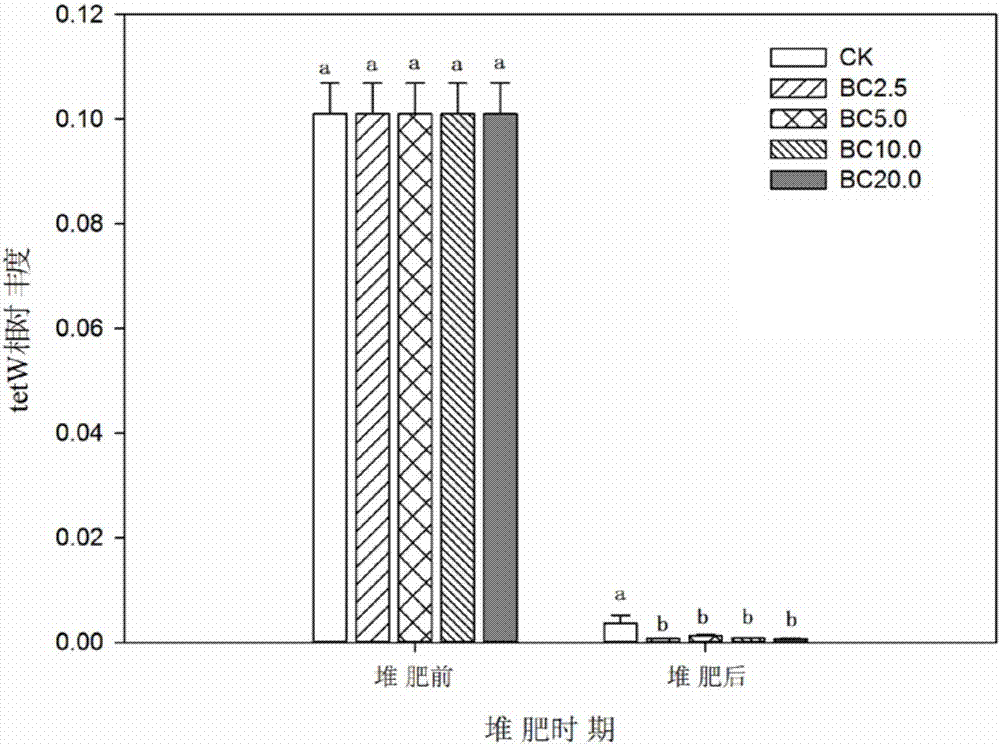Method for reducing abundance of tetracycline resistance genes in organic fertilizer
A technology of tetracyclines and resistance genes, which is applied in the field of solid waste treatment in the aquaculture industry, can solve the problems of low fertilizer efficiency, high heavy metal content, and long composting cycle, and achieves the advantages of accelerating compost maturity, increasing the temperature of the compost, and simple equipment structure Effect
- Summary
- Abstract
- Description
- Claims
- Application Information
AI Technical Summary
Problems solved by technology
Method used
Image
Examples
Embodiment Construction
[0026] The implementation of the present invention will be described in detail below in conjunction with the drawings and examples.
[0027] A method of reducing the abundance of tetracycline resistance genes in organic fertilizers of the present invention comprises:
[0028] Biochar acquisition: choose bamboo as raw material, cut the bamboo to a length of about 100mm, put it in an oven and bake it at 105°C for 12 hours; after cooling, put it in a carbonization furnace, crack it at 600°C for 4 hours, cool it to room temperature and grind it. Get bamboo charcoal through a 1mm sieve.
[0029] Composting process: Air-dry the chicken manure and wheat straw, measure the moisture content, organic carbon and organic nitrogen after air-drying, then crush the wheat straw to about 1cm, adjust the initial C / N ratio to 25:1 according to the calculated carbon and nitrogen content ratio (the dry weight of chicken manure and wheat stalks is 7kg), fully mix evenly. Composting experiments we...
PUM
 Login to View More
Login to View More Abstract
Description
Claims
Application Information
 Login to View More
Login to View More - R&D
- Intellectual Property
- Life Sciences
- Materials
- Tech Scout
- Unparalleled Data Quality
- Higher Quality Content
- 60% Fewer Hallucinations
Browse by: Latest US Patents, China's latest patents, Technical Efficacy Thesaurus, Application Domain, Technology Topic, Popular Technical Reports.
© 2025 PatSnap. All rights reserved.Legal|Privacy policy|Modern Slavery Act Transparency Statement|Sitemap|About US| Contact US: help@patsnap.com



